New Mexico’s night skies are a treasure for stargazers, offering a celestial canvas few places on Earth can match.
But the pervasive glow of light pollution threatens this pristine darkness, often obscuring the view of cosmic wonders above.
In this article, I’ll guide you through practical strategies to combat light pollution so you can experience New Mexico’s dark skies at their finest.
How do you use the New Mexico Dark Sky Map?
First, find clear viewing areas to navigate the night sky using the New Mexico Dark Sky Map. Then, use the map’s color codes to locate the darkest spots where the stars shine the brightest, perfect for stargazing or astrophotography.
Recommended For You
Understanding New Mexico’s Dark Sky
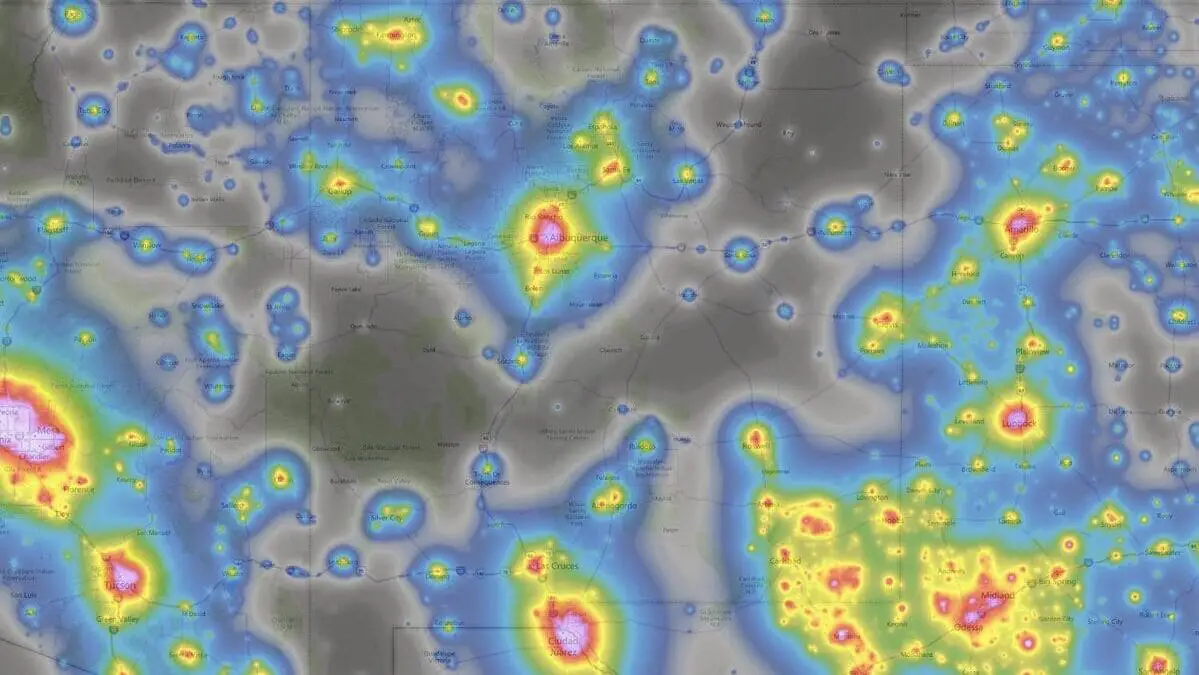
Effect of Light Pollution
Thanks to its well-preserved dark skies, I’ve found the night sky awe-inspiring in New Mexico.
However, light pollution caused by artificial sources, such as streetlights, buildings, and cars, can significantly affect your stargazing experience. This unwanted glow can create an unnatural haze in the sky, making it challenging to observe celestial objects like stars and galaxies. Natural light sources like the Moon and stars contribute to sky brightness, but artificial sources are the main culprit.
To protect the darkness of the night sky and reduce the impact of light pollution, New Mexico is home to several Dark Sky Parks. These parks use dark-sky-friendly specialized lighting, minimizing the sky’s brightness.
Here are some ways you can help reduce light pollution and preserve New Mexico’s dark skies:
- Turn off unnecessary outdoor lights.
- Shield your outdoor lights to direct the light downwards.
- Use energy-efficient and low-glare bulbs.
By taking these steps, you can help protect the night sky for future generations and ensure New Mexico remains a premier destination for stargazers and astronomy enthusiasts.
So next time you’re in New Mexico, remember to look at the stars and enjoy the stunning dark sky above you.
Exploring The Dark Sky Parks of New Mexico
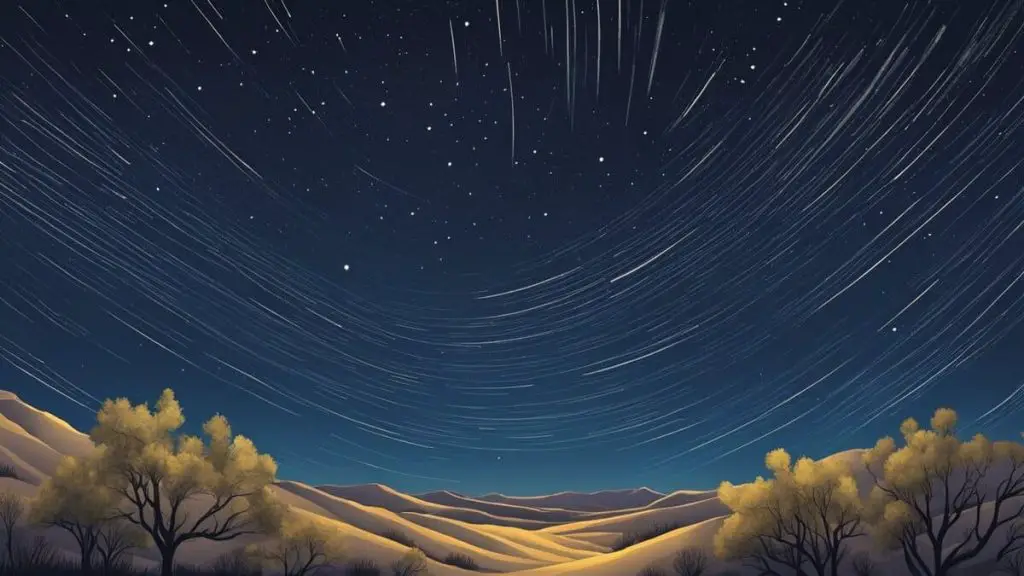
New Mexico is home to some fantastic dark sky parks, making it an excellent destination for stargazers. In this section, we’ll explore some of the state’s most popular dark sky parks and their unique features.
For a complete list, read my dedicated article on the best stargazing spots in New Mexico

Clayton Lake State Park
Located in northeastern New Mexico, Clayton Lake State Park is a fantastic place for stargazing due to its Gold-tier International Dark Sky Park status.
The park also has a fascinating attraction – dinosaur footprints! Clayton Lake State Park often hosts star-gazing events throughout the year. Each event has deepened my connection to the stars and the community of fellow enthusiasts.
Take some time to explore the park during the day and then settle in for a stunning night under the stars.
Capulin Volcano National Monument
Another popular dark sky site is the Capulin Volcano National Monument. The well-maintained hiking trails let you explore the unique volcanic landscape and admire the majestic views before setting up to observe the night sky.
Related Content: Capulin Volcano Dark Sky Park
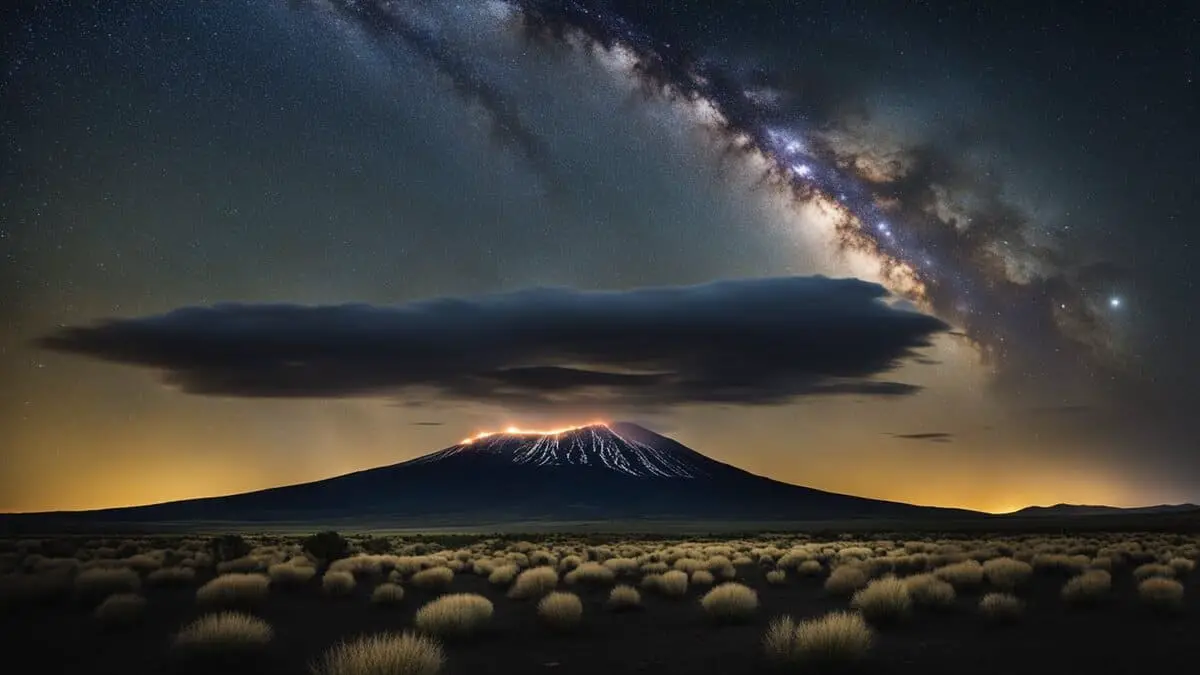
FREE STARGAZING CHECKLIST
My 5-page Stargazing Checklist will enhance your astronomical observations.
Follow this free checklist to navigate the night sky with confidence, clarity, and a sense of preparedness for a rewarding stargazing experience.

Salinas Pueblo Missions National Monument
Salinas Pueblo Missions National Monument is a dark sky park and a historic site with impressive Spanish mission churches. Visit this spot to take in the remarkable history during the day and then enjoy the dazzling stars at night.
Valles Caldera National Preserve
Nestled in the Jemez Mountains, Valles Caldera National Preserve is a perfect location for a secluded getaway. Teeming with wildlife and wide-open spaces, this dark sky park is ideal for stargazing and observing celestial events.
Fort Union National Monument
The Fort Union National Monument blends history and dark skies, making for an awe-inspiring experience. Visit the preserved buildings and immerse yourself in America’s past before marveling at the cosmos above.
Valle De Oro National Wildlife Refuge
Last is the Valle De Oro National Wildlife Refuge, the first-ever Urban Night Sky Place. Just a short drive from Albuquerque, this wildlife refuge offers a convenient spot for city dwellers to experience the beauty of a dark sky.
I always remind myself to pack my trusty telescope, a comfy chair, and warm clothes for a night under the brilliant New Mexico skies. The six locations above offer you a unique mix of history, nature, and some of the best stargazing opportunities in the United States.
Astronomy in New Mexico
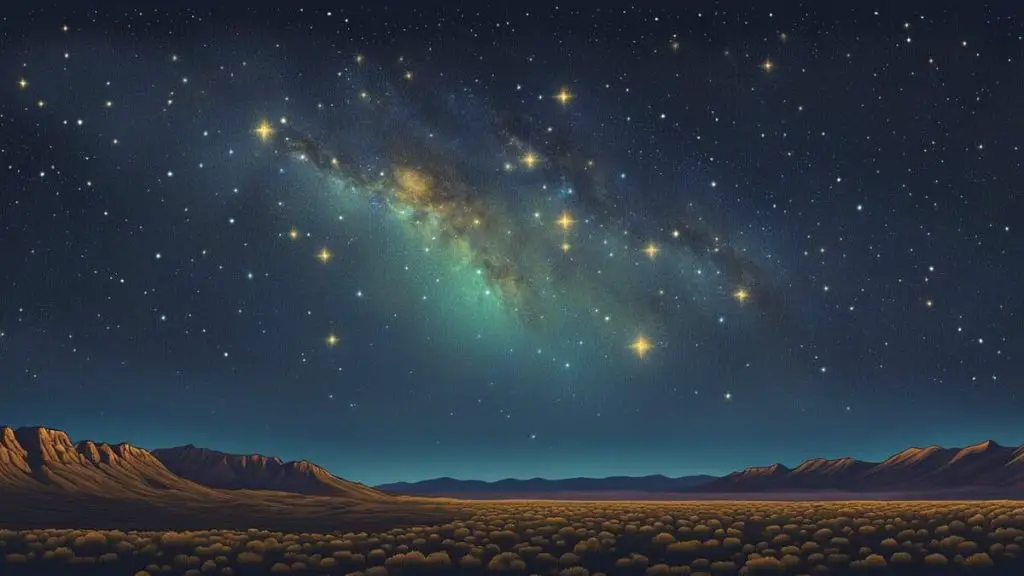
Star Parties and Astronomy Clubs
New Mexico has a vibrant astronomy community with various astronomy clubs and star parties held throughout the year. These events often occur in low-light pollution areas, like Cosmic Campground and Valles Caldera National Preserve.
At star parties, you can expect to:
- Observe constellations, planets, and galaxies with the naked eye or through telescopes
- Participate in educational programs about stargazing and the night sky
- Meet fellow astronomy enthusiasts
To join an astronomy club, visit local organizations offering regular events and resources.
Observatories and Telescopes
New Mexico has many observatories and telescopes, such as the Very Large Array. These facilities allow both professionals and amateur astronomers to observe celestial objects at a closer range. Some famous observatories in New Mexico include:
- Very Large Array: A radio astronomy observatory known for its extensive collection of high-quality telescopes
- Capulin Volcano: A Gold-Tier International Dark Sky Association (IDA) Park that boasts some of the best night skies in New Mexico
Visiting an observatory is an excellent opportunity to get hands-on experience with telescopes, learn about astronomical research, and witness the beauty of the cosmos up close. While visiting, you can observe the Milky Way, Moon, planets, nebulas, and even zodiacal light. These experiences have brought me face-to-face with the stunning beauty of distant galaxies and nebulae.
Cosmic Campground International Dark Sky Sanctuary
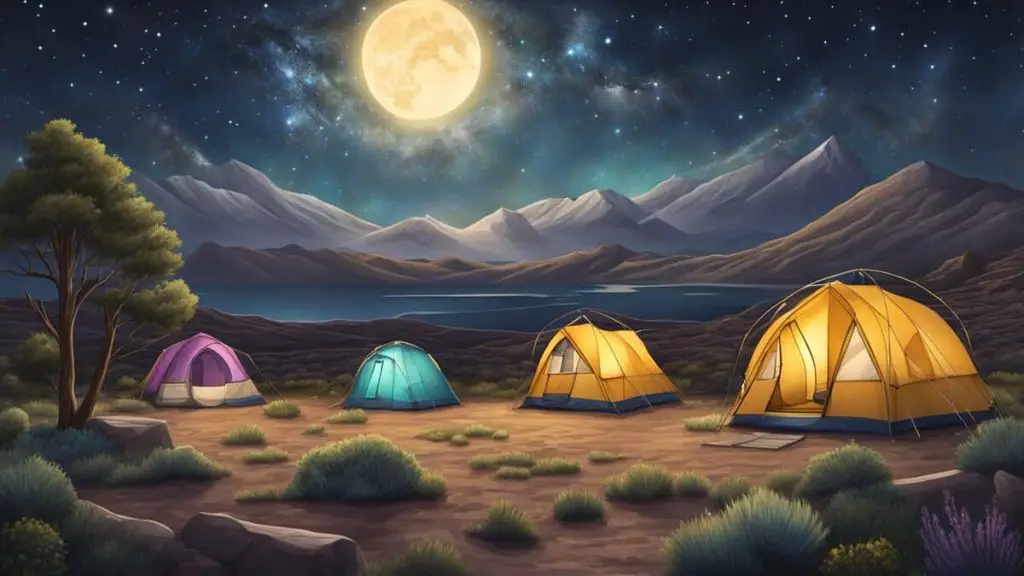
New Mexico is home to some incredible stargazing spots, and one of the best places to experience the night sky is the Cosmic Campground International Dark Sky Sanctuary. This unique location is the first International Dark Sky Sanctuary on National Forest System lands in North America, making it a must-see for amateur astronomers.
At the Cosmic Campground, you can expect unobstructed 360-degree views of the stars since there are no nearby artificial light sources for over 65 kilometers. I found the sanctuary easily accessible, nestled off U.S. Highway 180 between Alma and Reserve.
To help you prepare for your visit, here are some key features of the Cosmic Campground:
- 360-degree, unobstructed view of the night sky
- Minimal infrastructure to support campers
- Located in the Gila National Forest
When visiting the Cosmic Campground, it’s essential to follow some basic tips to ensure you have the best stargazing experience possible:
- Check the weather before you go, as clear skies are essential for optimal viewing.
- I always remember to bring a red flashlight to preserve my night vision when making my way around the campground.
- Use a star map or app to identify constellations or specific celestial objects you want to observe.
- If you have a telescope, bring it along to enhance your viewing experience, but remember that even the naked eye can appreciate the beauty of the dark sky.
So, if you find yourself in New Mexico, take advantage of the opportunity to experience the stunning night sky at the Cosmic Campground International Dark Sky Sanctuary.
Read my dedicated article about the Cosmic Campground.
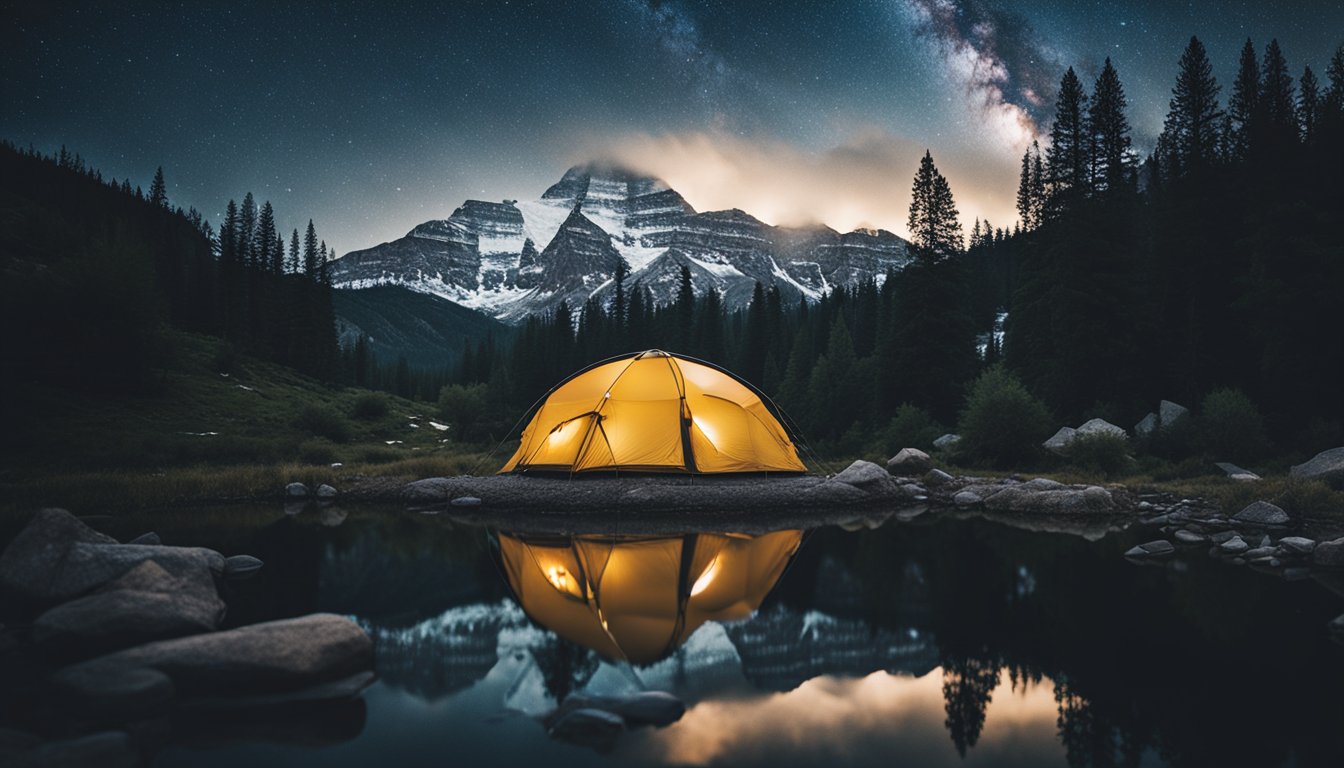
Ancient People and The Night Sky
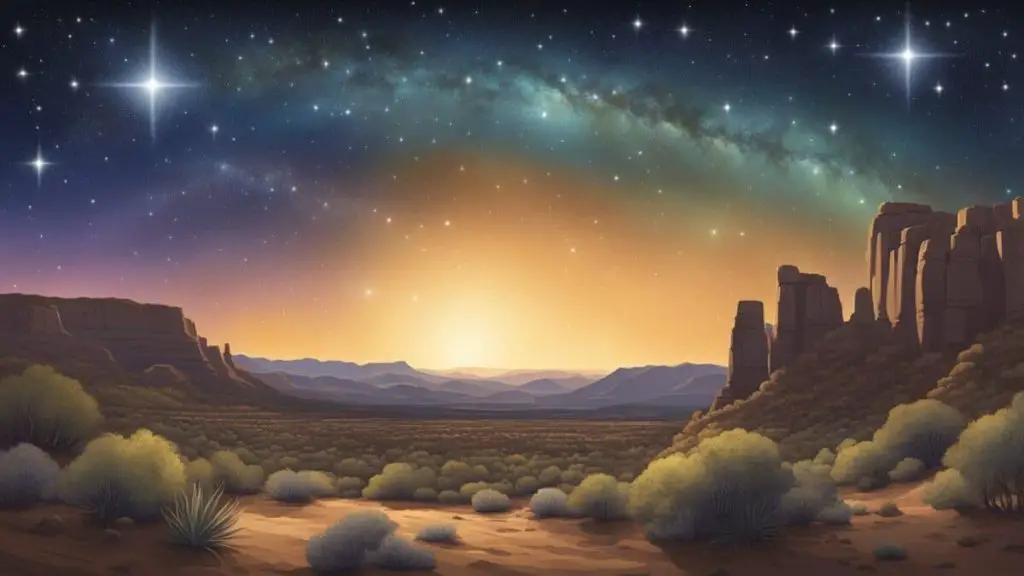
The night sky holds a special significance for the ancestral Puebloans, a prehistoric Native American culture that thrived in what is now New Mexico. The Chaco Culture National Historical Park is a testimony to their strong connection with the stars and celestial phenomena.
As you wander through the ancient ruins, you’ll find impressive examples of their art and culture – from petroglyphs depicting celestial events to observatories aligning with the movements of celestial bodies. It’s a poignant reminder of the timeless human connection to the stars.
The Puebloans were keen observers of the night sky and used their observations in their:
- Agriculture
- Architecture
- Mythology
- Rituals
One striking example of their astronomical knowledge is documented in Chaco Canyon’s astronomical rock art, which captures what the people of the time saw in the sky. Discoveries like these highlight the importance of understanding and appreciating the night sky to ancient civilizations like the Puebloans.
While visiting Chaco Culture National Historical Park, take the time to admire the petroglyphs, ancient ruins, and observatories. You’re not just witnessing remnants of a bygone era, but also gaining a deeper understanding of an ancient culture’s reverence for the night sky.
Experiencing Dark Skies
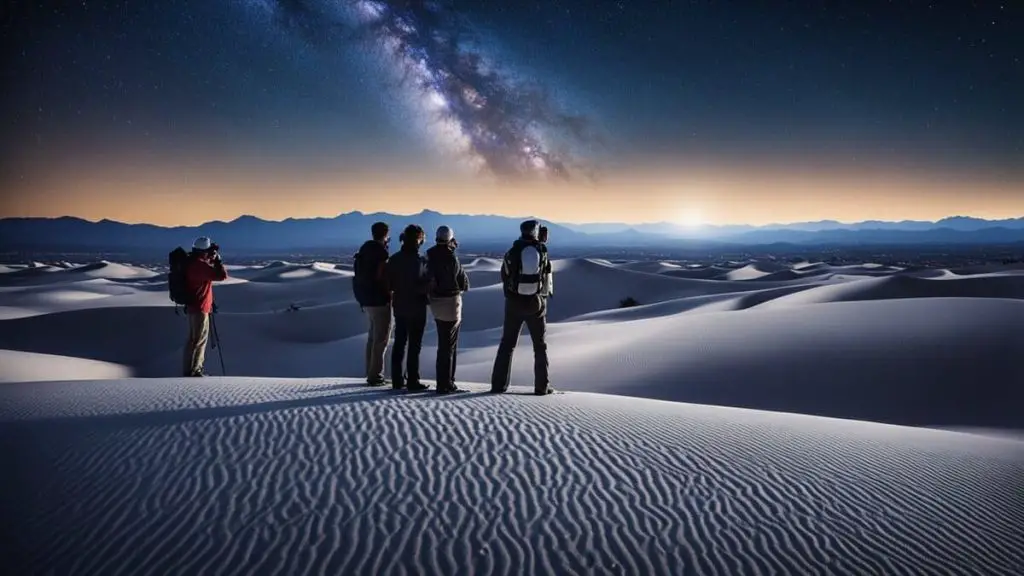
New Mexico offers fantastic opportunities for stargazing and experiencing dark skies. With its vast spaces, low population density, and clear skies, you’ll find mesmerizing night sky views as you explore the outdoors.
Bonus Content: When is Milky Way Season in New Mexico?

As I prepare for my dark-sky adventures, I double-check my list of essential items, such as warm clothing, comfortable shoes, and a flashlight with a red filter to help preserve your night vision.
Bring appropriate gear like a tent, sleeping bag, and cooking equipment if you plan on camping overnight. Remember your binoculars or telescope to get an even closer look at the beautiful celestial bodies above.
To maximize your dark sky experience, consider these tips for a great view after sundown:
- Choose a location far from city lights or large towns.
- Check the New Mexico dark skies map to find a suitable observing spot.
- Plan your trip around a new moon for the least amount of natural light pollution.
- Watch the weather forecast, looking for clear skies and low humidity.
- Arrive at your observing site early enough to set up your equipment and let your eyes adjust to the darkness.
You might be lucky to catch a beautiful sunrise or sunset that adds to the overall experience during your visit. Make sure to capture these moments with your camera or enjoy them.
Many dark sky parks in New Mexico, such as the Valles Caldera National Preserve, have a visitor center to learn more about the area, ongoing programs, and stargazing events. These centers are valuable resources for first-time visitors, providing expert guidance and local knowledge to enhance your dark sky experience.
As you explore New Mexico’s dark skies, take the opportunity to connect with nature, deepen your appreciation for the night sky, and create lasting memories of your stargazing journey.
Dark Sky Photography in New Mexico
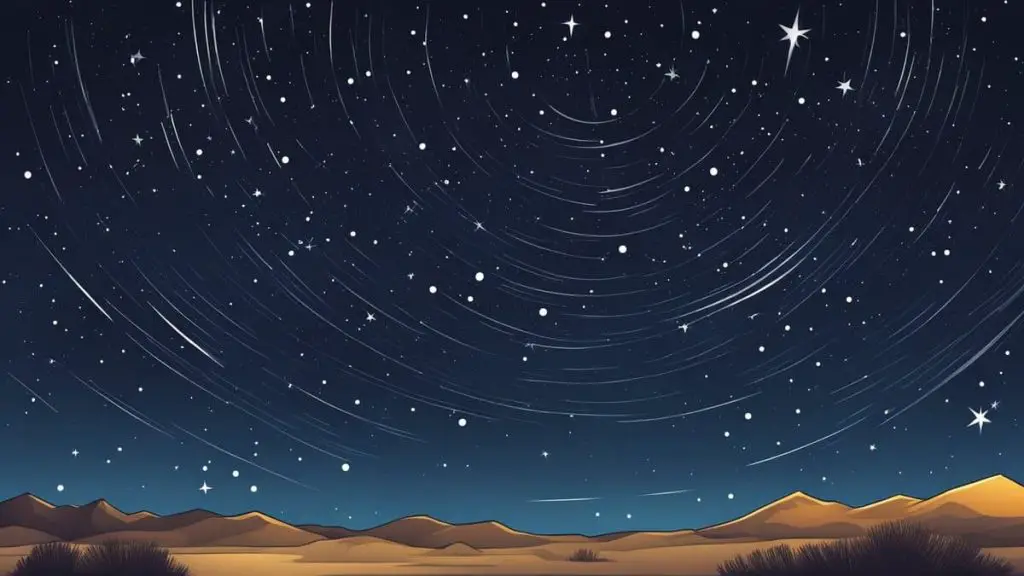
New Mexico offers some fantastic spots for astrophotography. Its dark skies and lack of light pollution make it ideal for capturing stunning night sky views. Here are some tips and tricks for astrophotographers looking to get the most out of their night sky photography adventures in New Mexico.
First, it’s essential to find the right location. Some great places for stargazing and astrophotography in New Mexico are Clayton Lake State Park and Manzano Mountains. These dark sky locations provide less light pollution and breathtaking views of the Milky Way, planets, and meteor showers.
Next, plan your trip during crucial times for optimal stargazing conditions. Ideally, you want to visit during the week of the new Moon, as the sky is darkest. Also, consider planning your trip around meteor shower events for a chance to capture some stunning shots of shooting stars.
Let’s talk about equipment and camera settings. You don’t need a professional-grade camera, but having a DSLR or mirrorless camera that allows manual control over settings will help you achieve better results.
Here are some essential setup tips for night sky photography:
- Set camera focus to manual and focus on infinity.
- I always opt for my wide-angle lens, typically 14-24mm, to capture the grandeur of New Mexico’s night sky.
- Set the aperture to the lowest f-number (the widest opening) for maximum light capture.
- Start with an ISO setting around 1600-3200 to balance sufficient light and minimal noise.
- Set the shutter speed to 20-30 seconds to avoid star trails.
When it comes to actually taking your photos, remember to:
- Mount your camera on a sturdy tripod for stability.
- Use a cable release or built-in timer to avoid camera shake.
- Shoot in RAW format for better editing capabilities later on.
- Take multiple shots and experiment with different settings.
Here are some additional tips to get the best possible photos:
- Try incorporating landscape elements into your shots, such as trees or rock formations, to make the photos more engaging.
- Use a red light headlamp or flashlight to maintain your night vision, but avoid introducing light pollution into your photos.
- Be patient and enjoy the stargazing experience while waiting for the perfect shot.
New Mexico’s dark skies offer great opportunities for astro enthusiasts. With these tips and some planning, you’re well on your way to capturing night sky photos that’ll make your friends jealous.
Preserving The Dark Sky

New Mexico takes dark sky preservation seriously to ensure that stargazers can keep enjoying the wonders of the night sky.
If you are passionate about protecting these magnificent skies, there are several steps you can take:
- Join the International Dark-Sky Association to stay informed about the latest efforts to preserve dark skies.
- Help to prevent light pollution by using outdoor lighting that’s dark-sky-friendly. Shield your lights downward and choose warmer-colored bulbs.
- Share your passion for dark skies with friends and family so that more people understand the importance of preserving this natural resource.
We can protect and preserve New Mexico’s dark skies by working together for future generations.
Preventing light pollution benefits stargazers, protects nocturnal wildlife, and reduces energy consumption. So, let’s all do our part in keeping the skies dark and beautiful.
Frequently Asked Questions
Can I find constellations using the New Mexico Dark Sky Map?
Yes, the New Mexico Dark Sky Map can help you locate constellations. The map’s dark areas show where the stars appear brightest, making it easier to identify constellations and other celestial wonders without the interference of light pollution.
What’s the best season for stargazing in New Mexico?
The best season for stargazing in New Mexico is during the Milky Way Season. Summer offers warmer nights and the chance to see the Milky Way Galactic Center. Winter provides longer nights, ideal for viewing many stars and planets.
How can beginners get involved in stargazing in New Mexico?
Beginners can dive into stargazing in New Mexico by visiting dark sky parks during organized star parties. These events often feature guided stargazing, where you can learn how to spot constellations and use telescopes, making it a great starting point for novices.
Final Words: New Mexico Dark Sky Map
As you venture into the starlit skies, remember that each night is a new canvas for celestial wonders. Embrace the adventure with patience and curiosity. Whether you’re tracing constellations or capturing the dance of a comet, the cosmos offers endless wonder. Keep your eyes on the stars, and you’ll find that the universe reveals more of its secrets with each gaze.
Happy stargazing in New Mexico!




